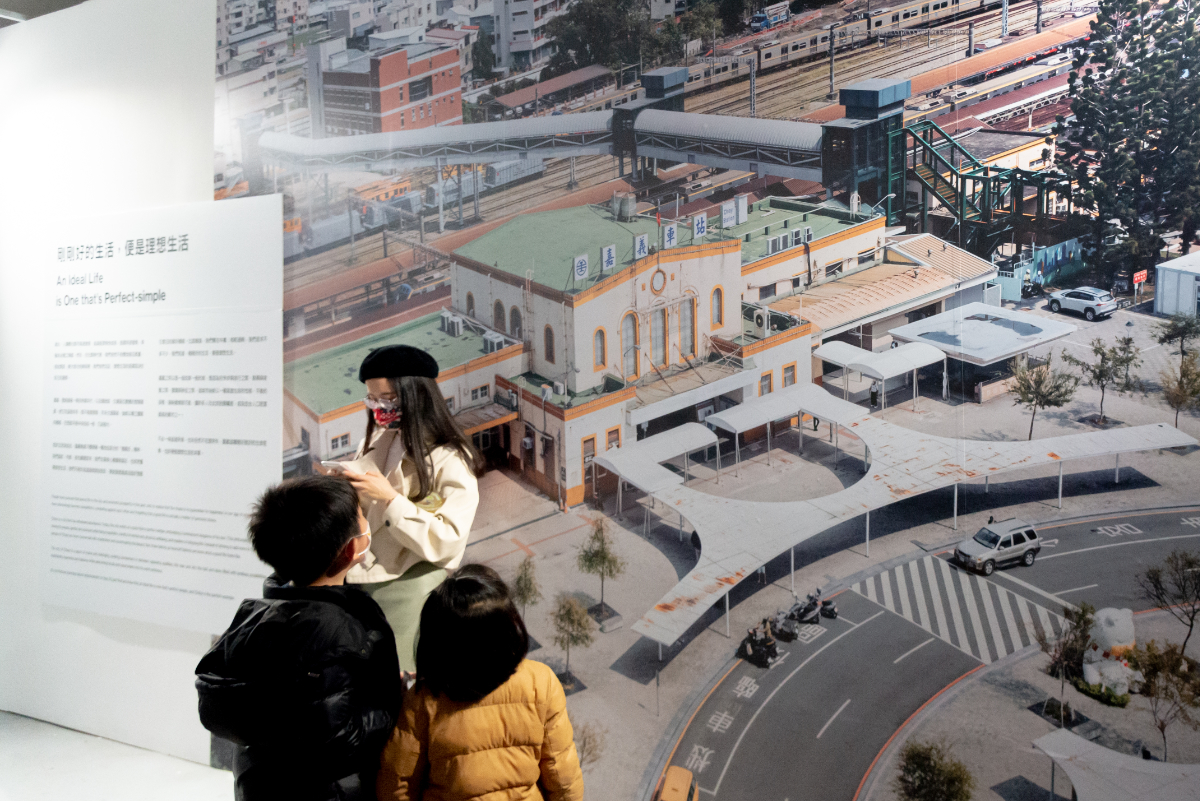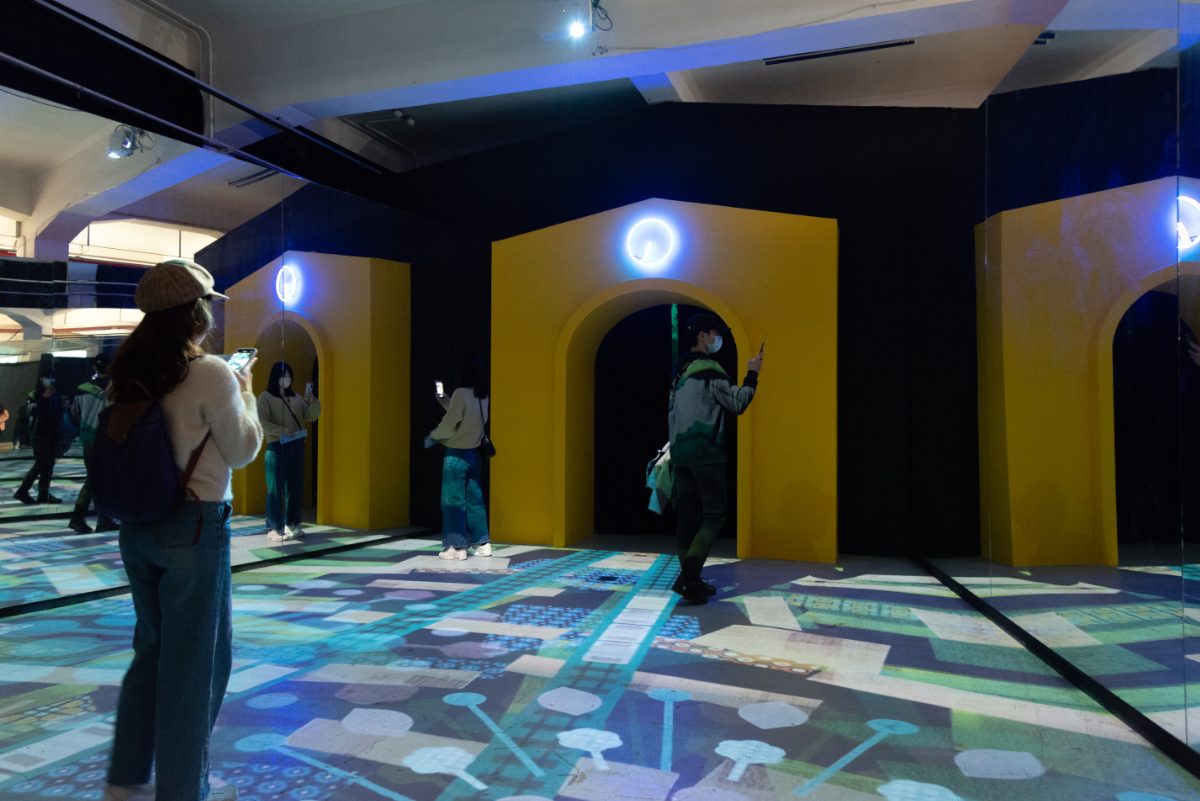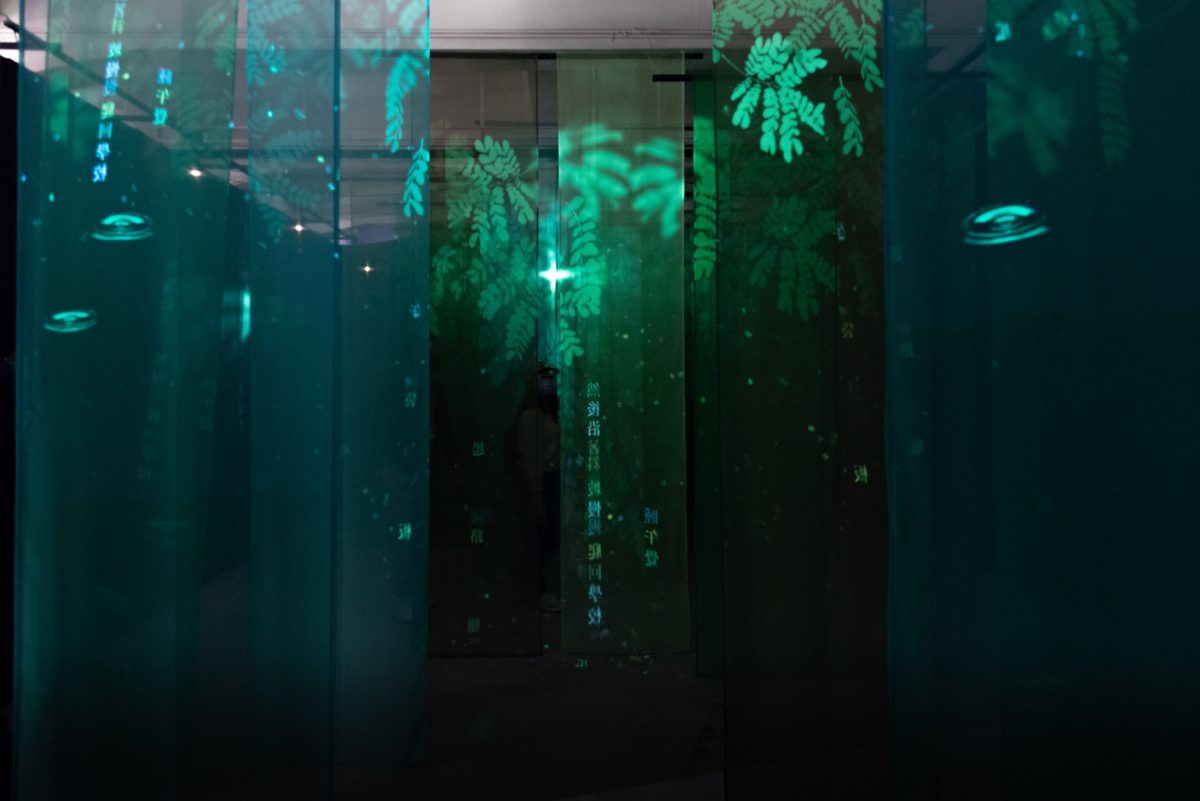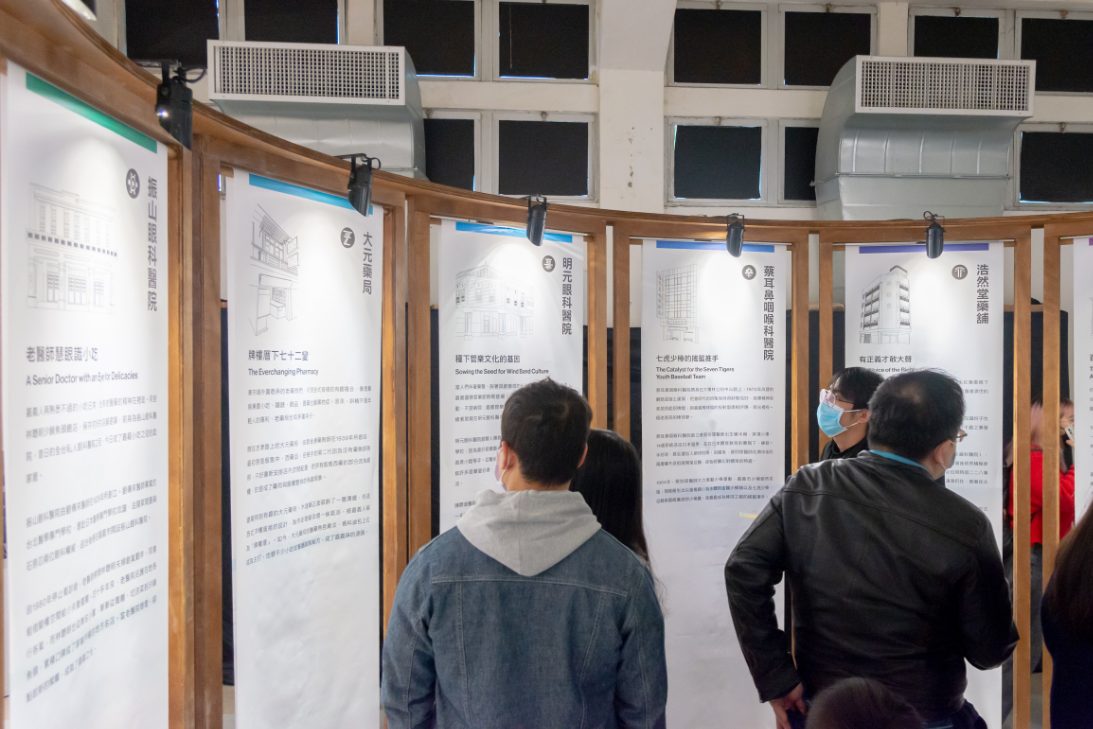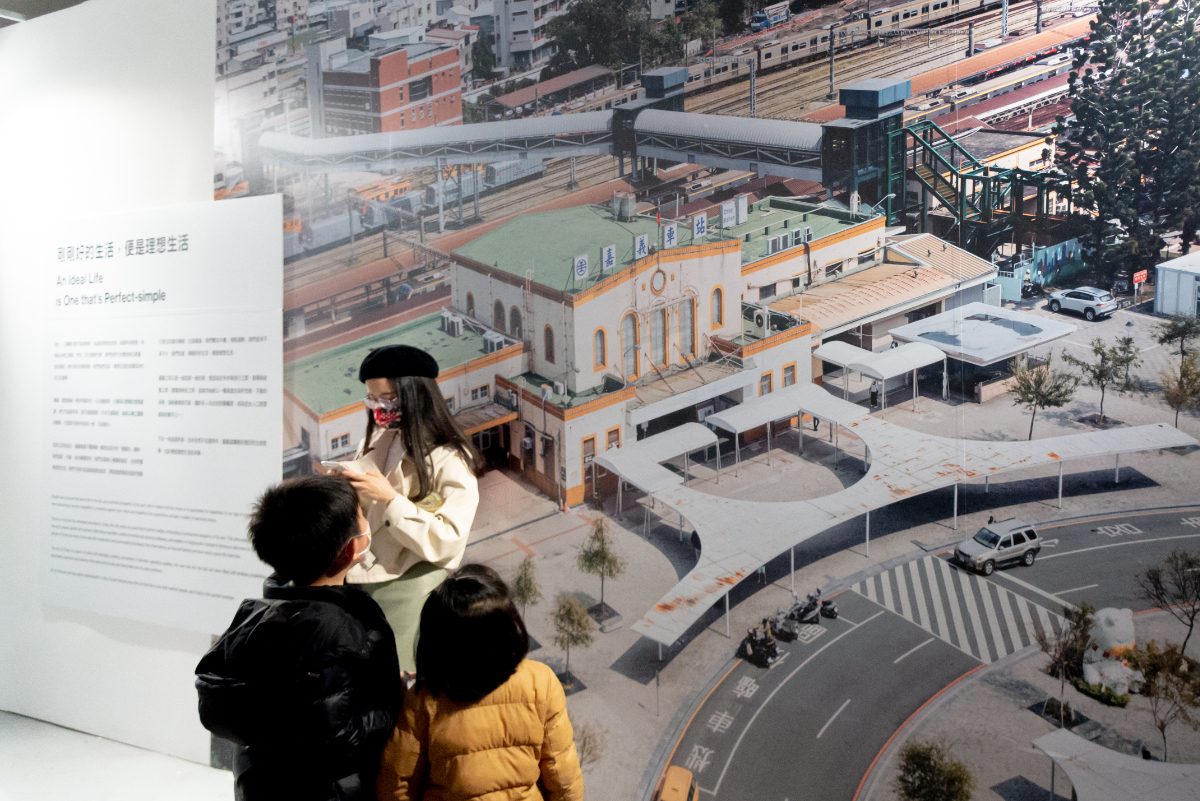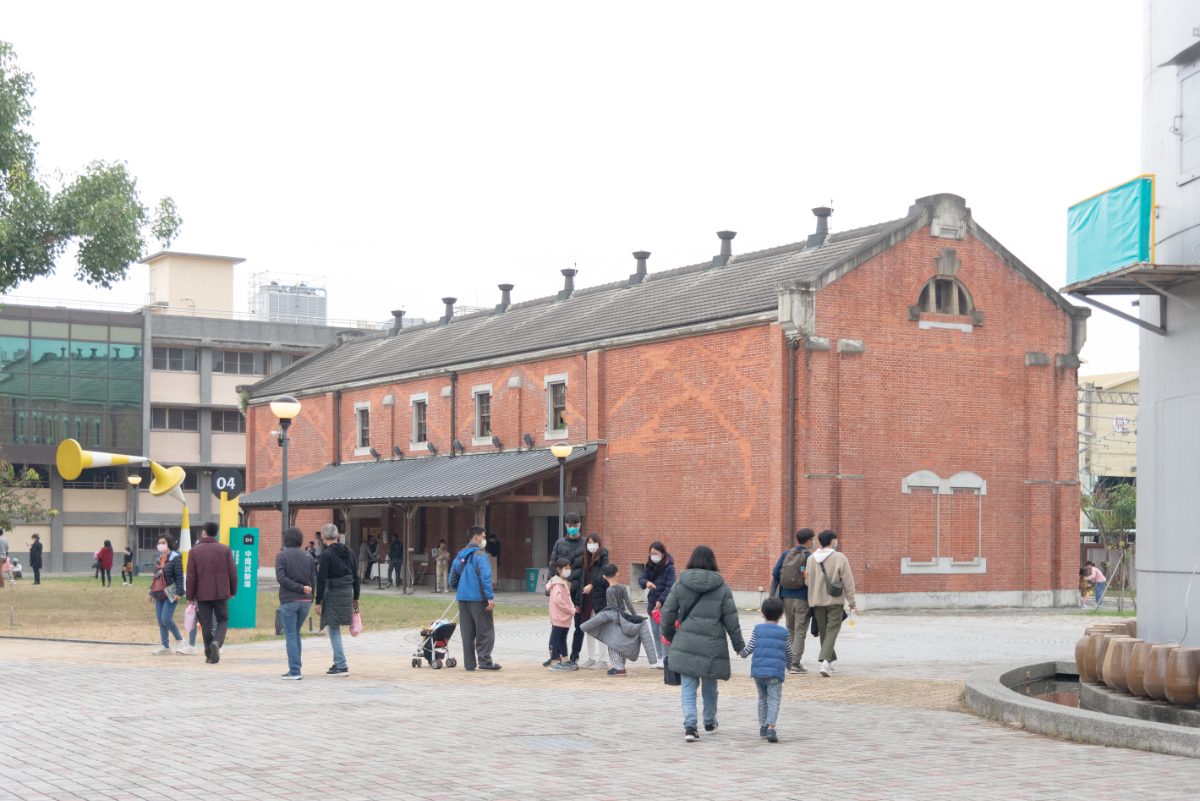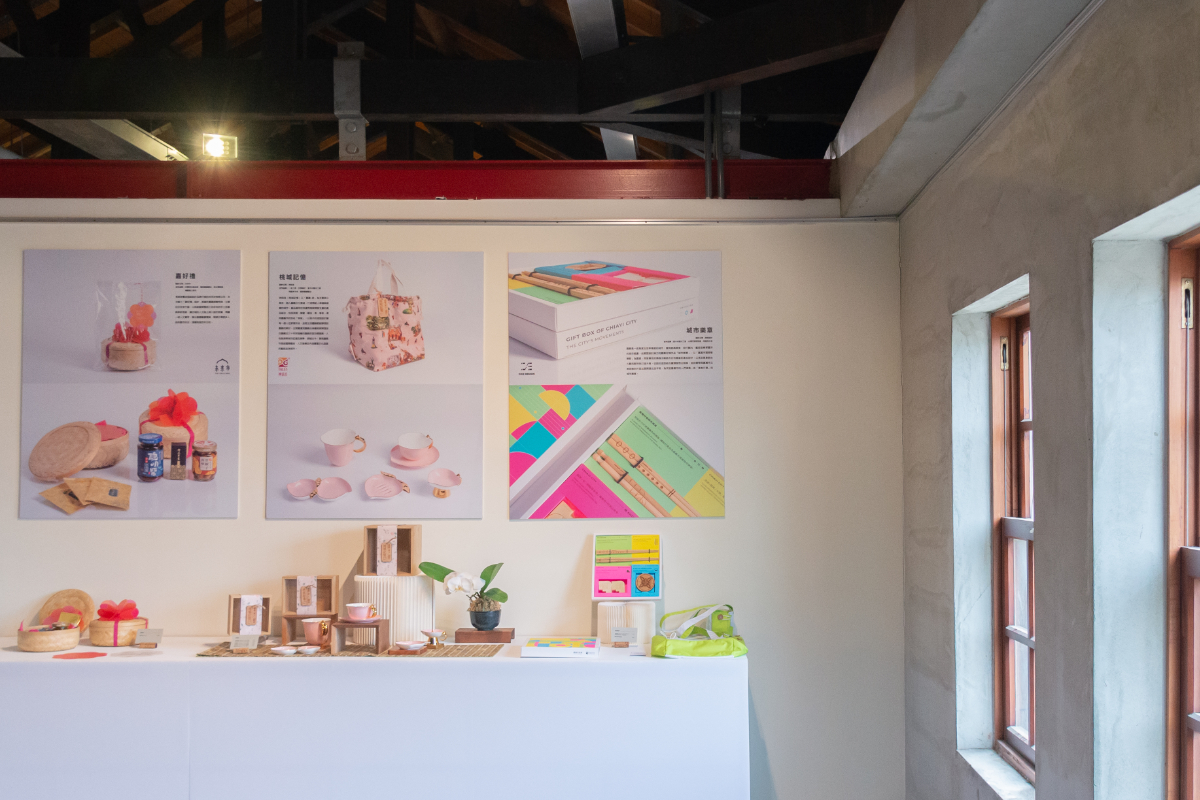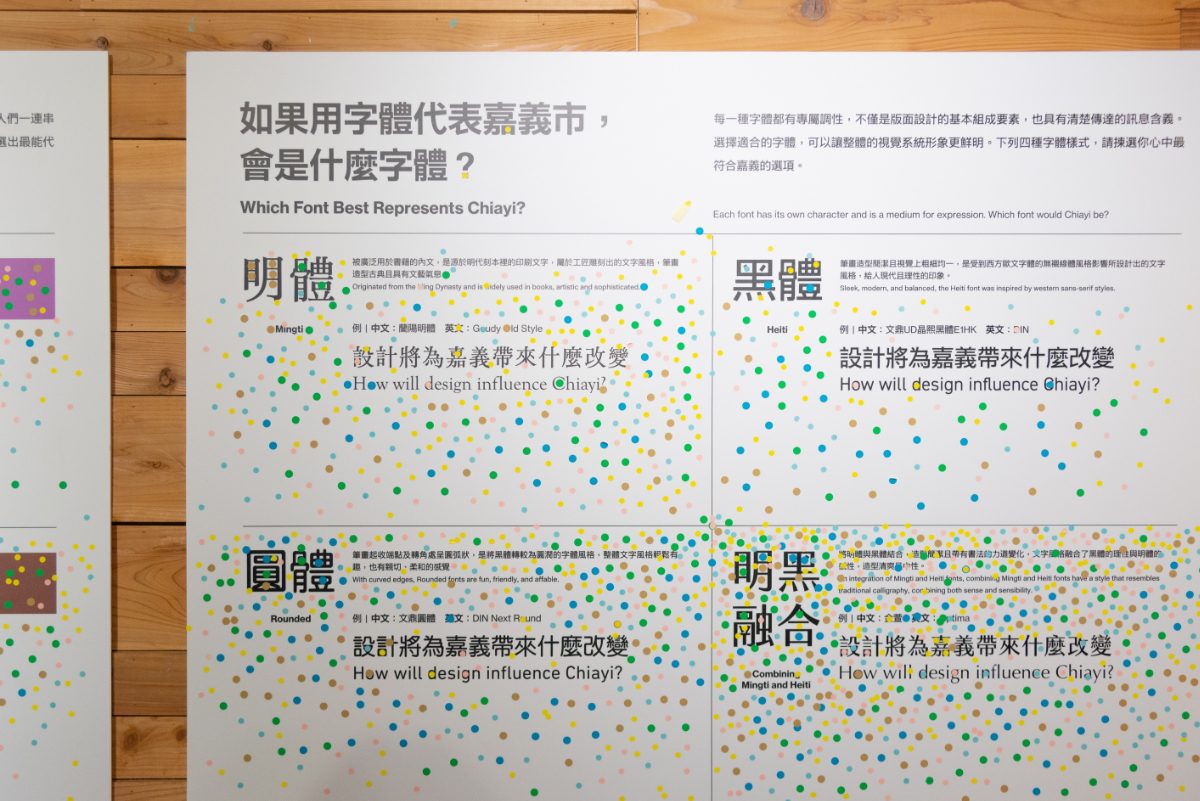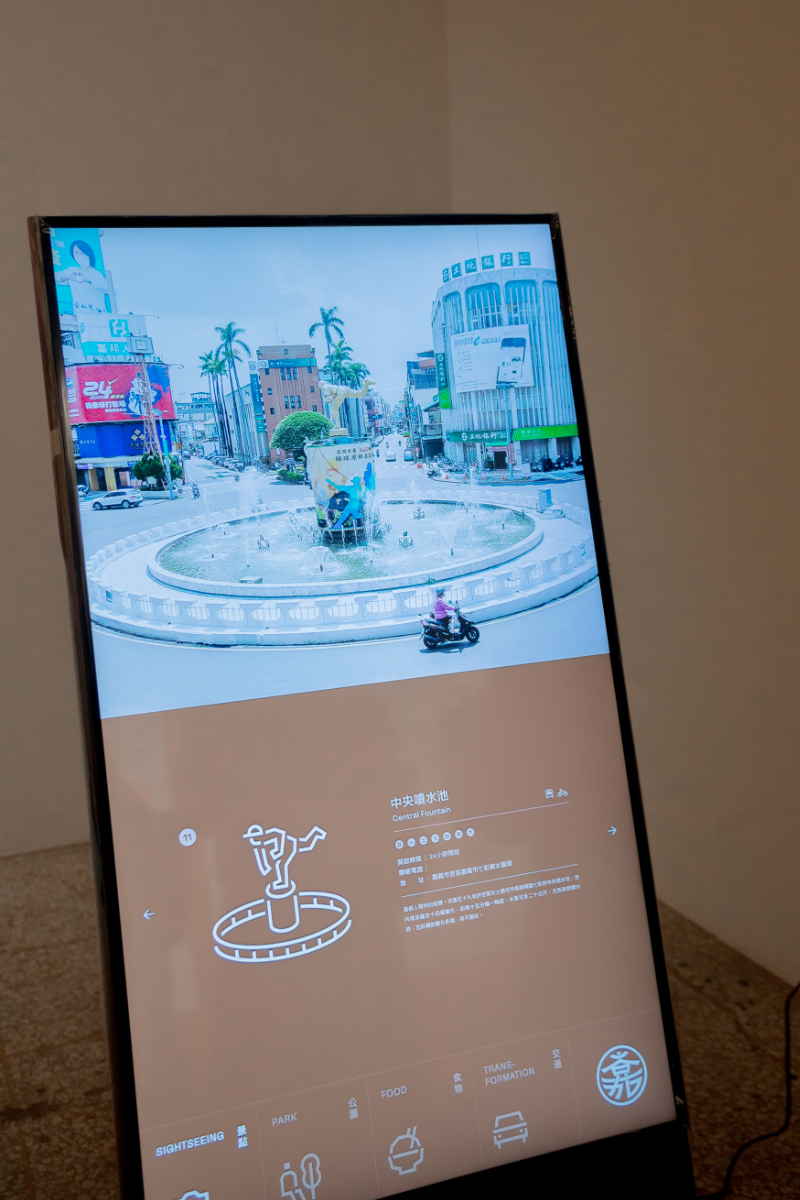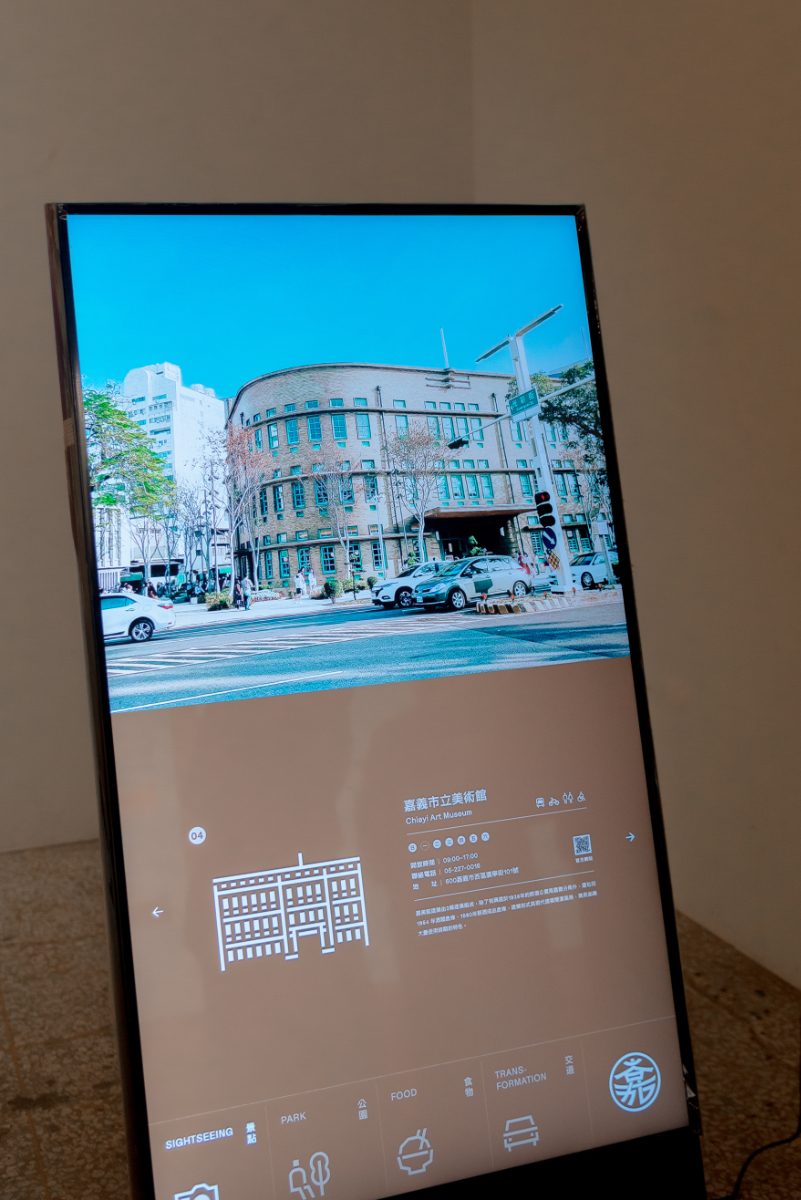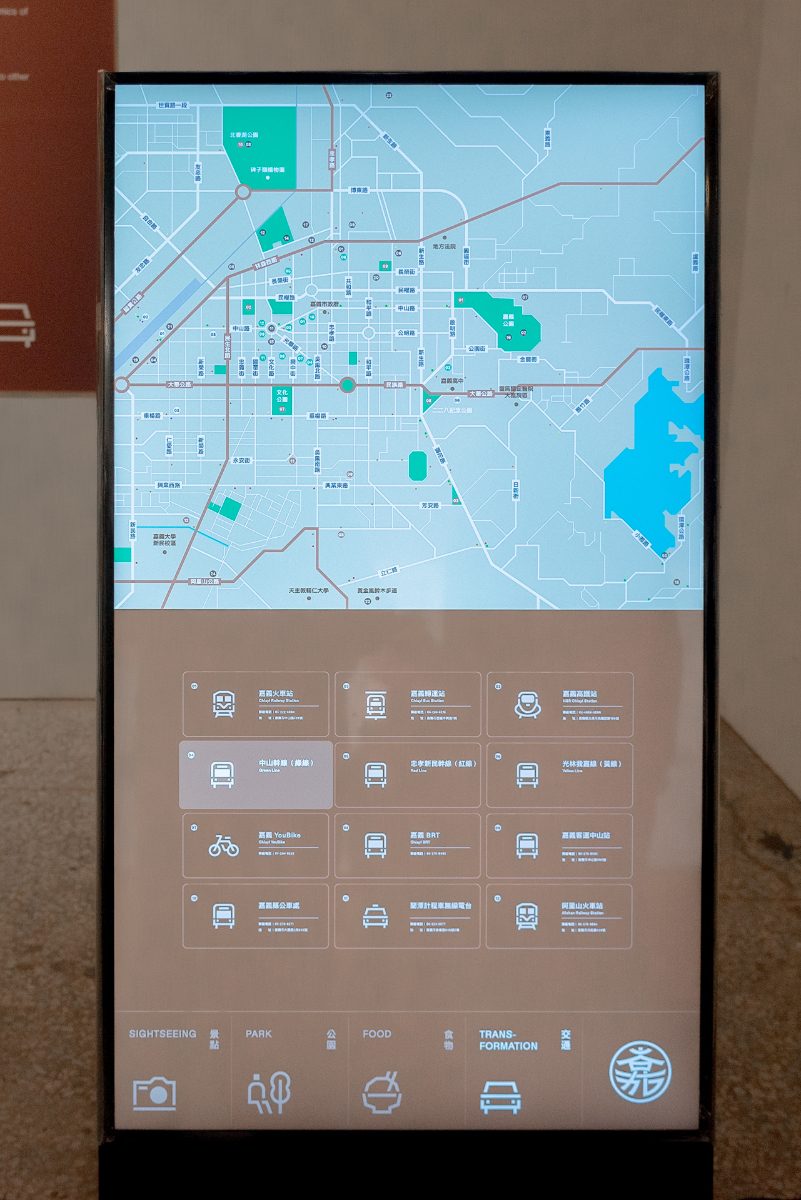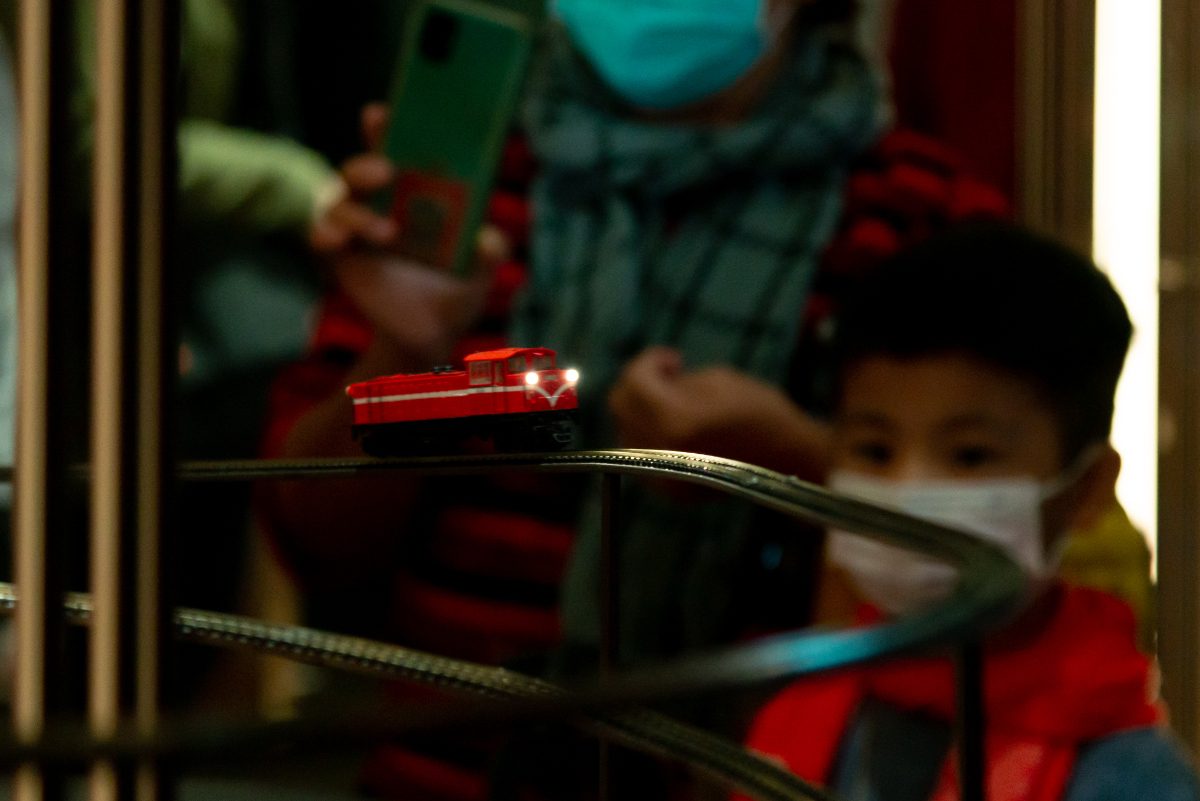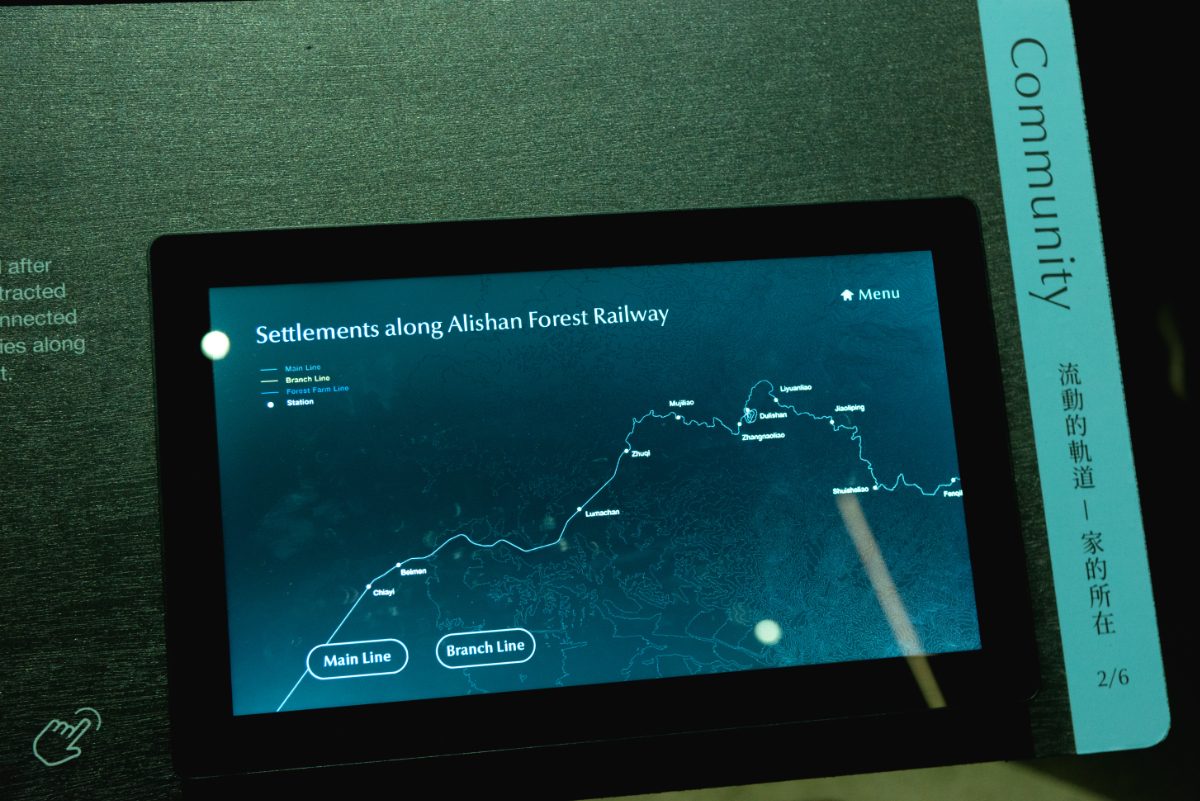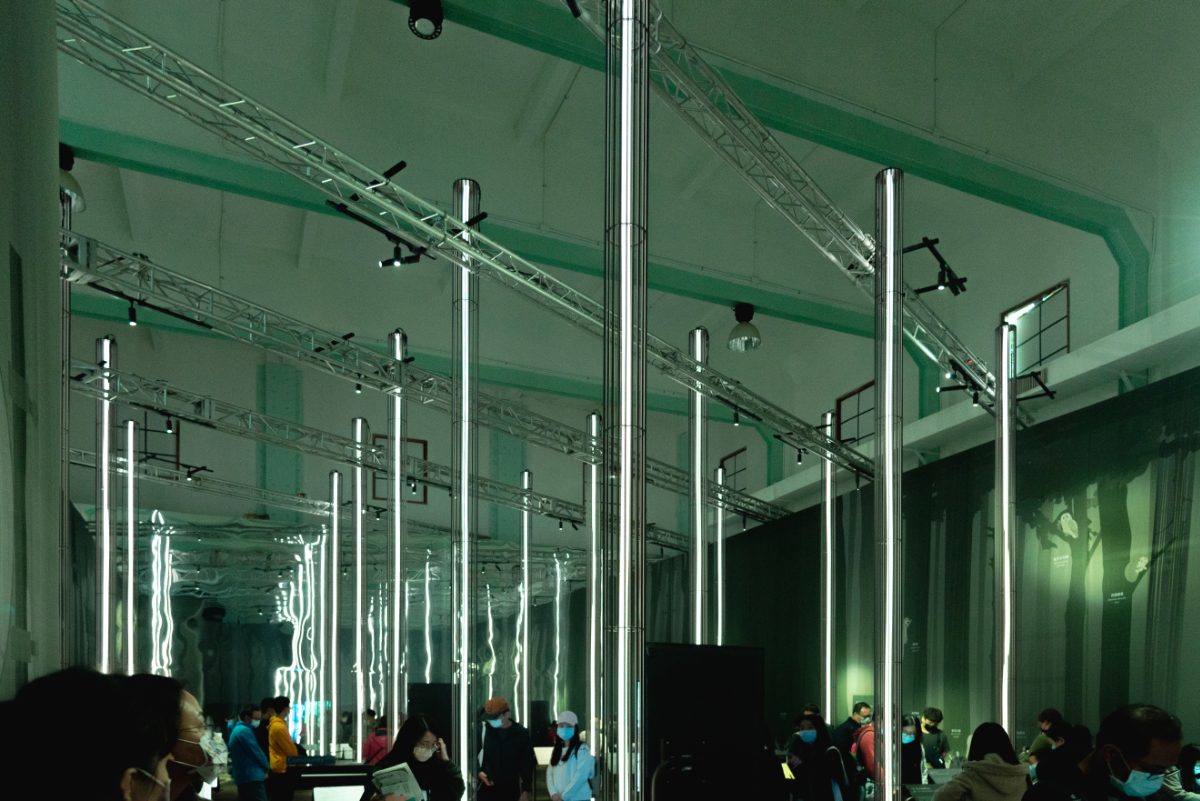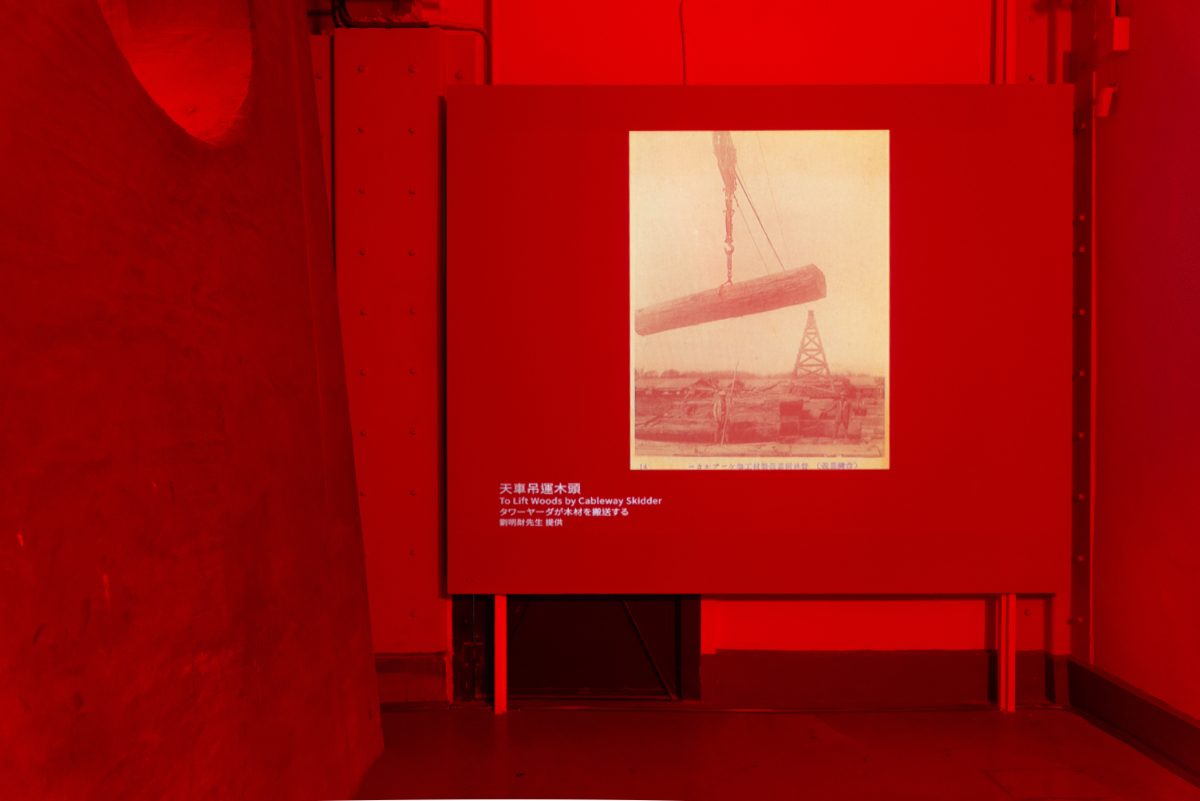CHECK OUT TAIWANESE DESIGN AND FIND OUT HOW MIGHT A ‘CITY’ BE TURNED INTO A ‘HOME’ IN TAIWAN DESIGN EXPO’21 IN CHIAYI HELD UNDER THE THEME ‘CITY AS HOME’ IN CHIAYI, A SMALL TOWN IN THE SOUTHERN PART OF TAIWAN TO CIRCULATE DESIGNS TO THE LOCALS
TEXT: NAPAT CHARITBUTRA
PHOTO: NAPAT CHARITBUTRA EXCEPT AS NOTED
(For Thai, press here)
The first day I started writing this article was in early February. It was around the same time when, over in Bangkok, Bangkok Design Week 2022 was selecting and gathering together designers to brainstorm ideas for the year’s theme ‘Co with Creation’ during the time when COVID-19 cases in Thailand were passing the 10,000 cases mark. For Taiwan, COVID-19 seems like something people have moved on from, considering how Taiwan Design Expo 2021 hosted by Industrial Development Bureau, Ministry of Economic Affairs and TDRI (Taiwan Design Research Institute) in Chiayi centered its discussion around a lot more of a romantic issue like ‘City as Home’.
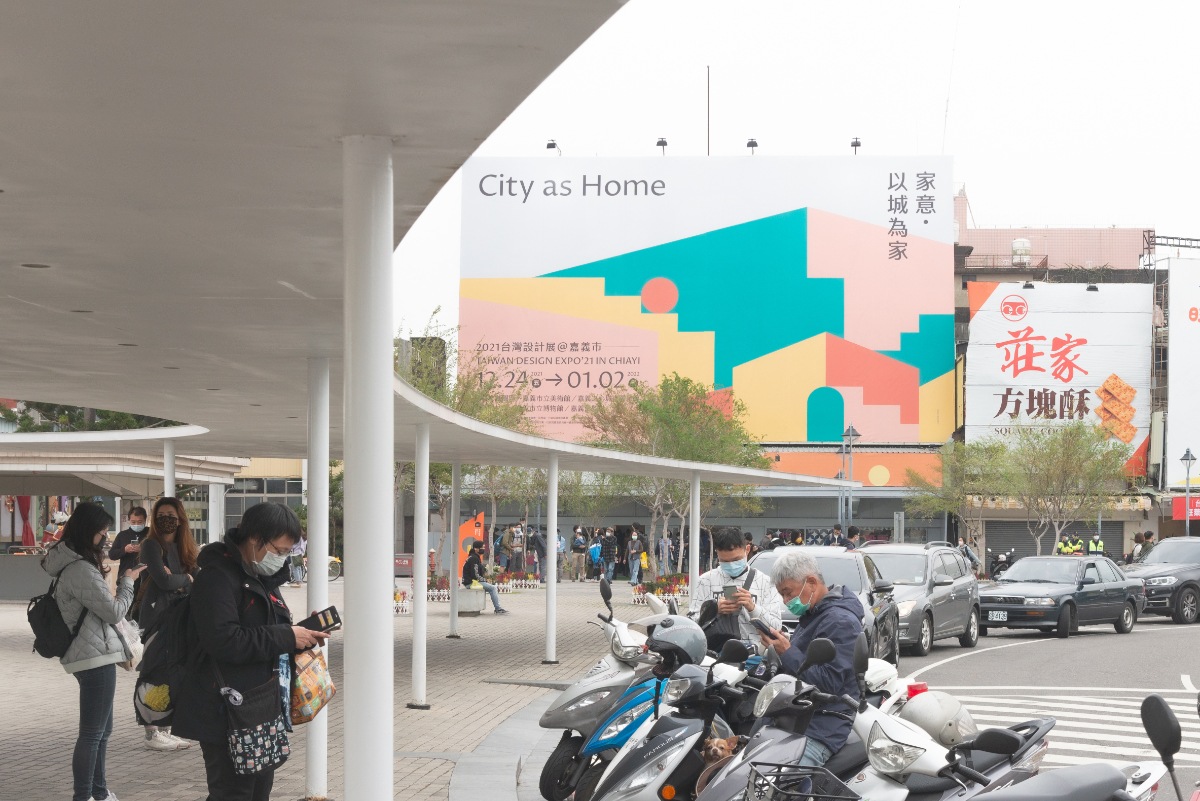
Photo: Napat Charitbutra
Chiayi is a small town in the south of Taiwan with a total area of merely six square kilometers. The town is smaller than the Shihlin neighborhood (with the famous night market) in Taipei and home to 266,005 residents and has seen only 10 COVID-19 cases since the pandemic broke out in 2019.
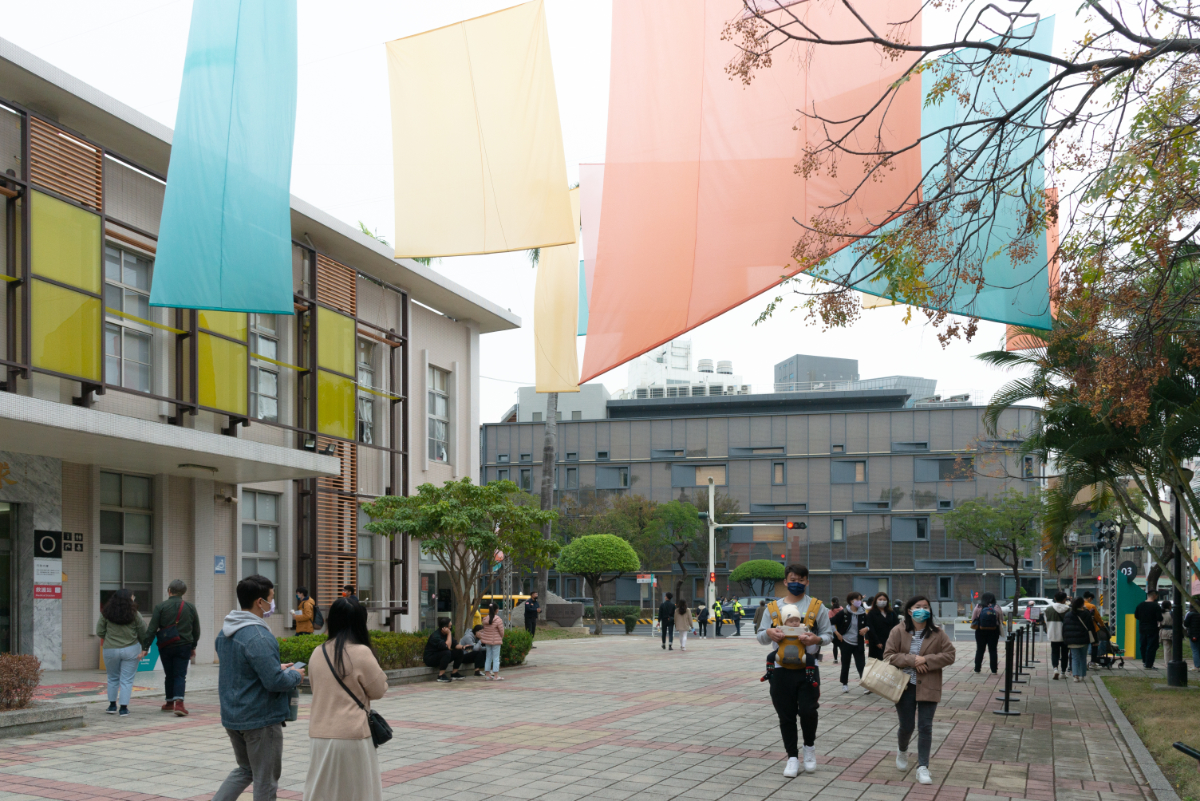
Photo: Napat Charitbutra
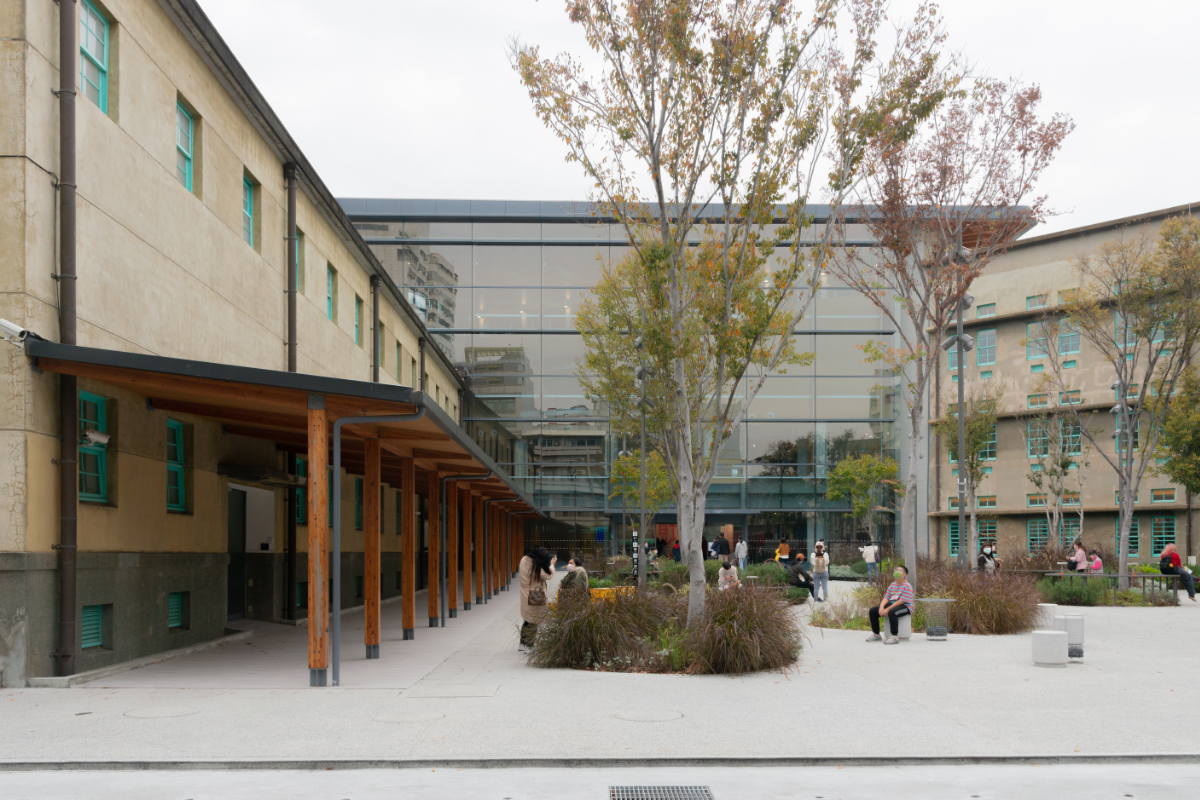
Photo: Napat Charitbutra
With Chiayi’s compact size, the exhibition venues can be found throughout different parts of the town. Taiwan Design Expo 2021 in Chiayi – City as Home divides its contents into three parts, Scale of Home, Spirit of Home and Memory of Home, using the town’s landmarks as the main exhibitions venues, from Chiayi Cultural and Creative Industries Park, the recently opened Chiayi Art Museum (even a town this small has an art museum!) to an old prison.
Chiayi City: Another Way of Living was curated to bring people a better understanding about Chiayi through the presentation of the town’s basic information such as its population, the green space ratio, the efficiency of their public healthcare system, etc., all thoughtfully visualized for viewers to understand more easily. With the theme revolving around ‘house’, who would know Chiayi better than a Chiayi native. Brian Huang, Executive Editor of VERSE Magazine has been selected as the event’s curator. For this return to his hometown, Huang invited over 20 creators/old friends to take part in representing Chiayi. Another interesting issue is how the event was curated to target, not only the visiting outsiders but also the Chiayi locals, allowing the town to be interpreted from a fresher perspective.
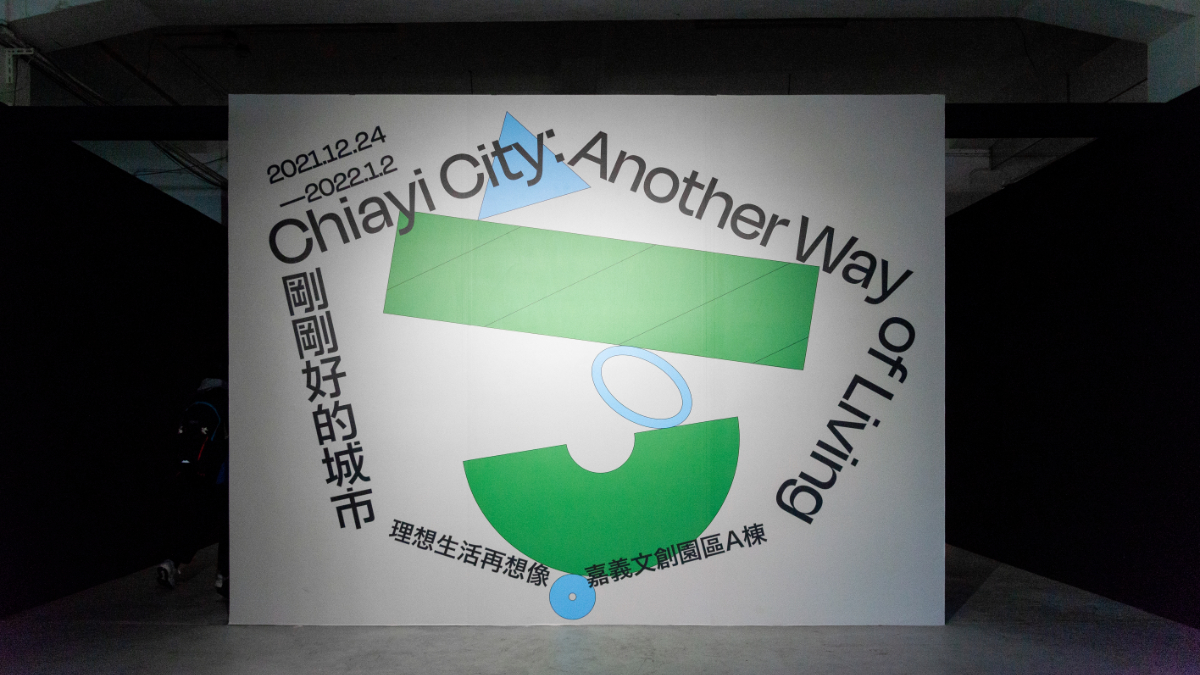
Photo: Napat Charitbutra
Brian Huang views Chiayi through the criteria that comprises speed, time and scale. The six-kilometer radius means the people of Chiayi can go about town and have their businesses done in fifteen minutes. The curator assigned the town’s independent bookshops, old markets, old houses, turkey rice (the famous local dish), public park, train station, roadways, roundabout and the people of Chiayi the leading roles. What’s brilliant about this exhibition is the succinct and concise use of text to explain the works. Even the longest description is never longer than five lines (making it easier for viewers who weren’t exactly fluent in English to understand). The short description also allowed visitors to have more time to focus and partake in different activities. I saw people taking out written pieces of paper from a wooden box, reading the messages of fortunes they drew out at the exhibition board nearby before heading out to visit the old houses of Chiayi.
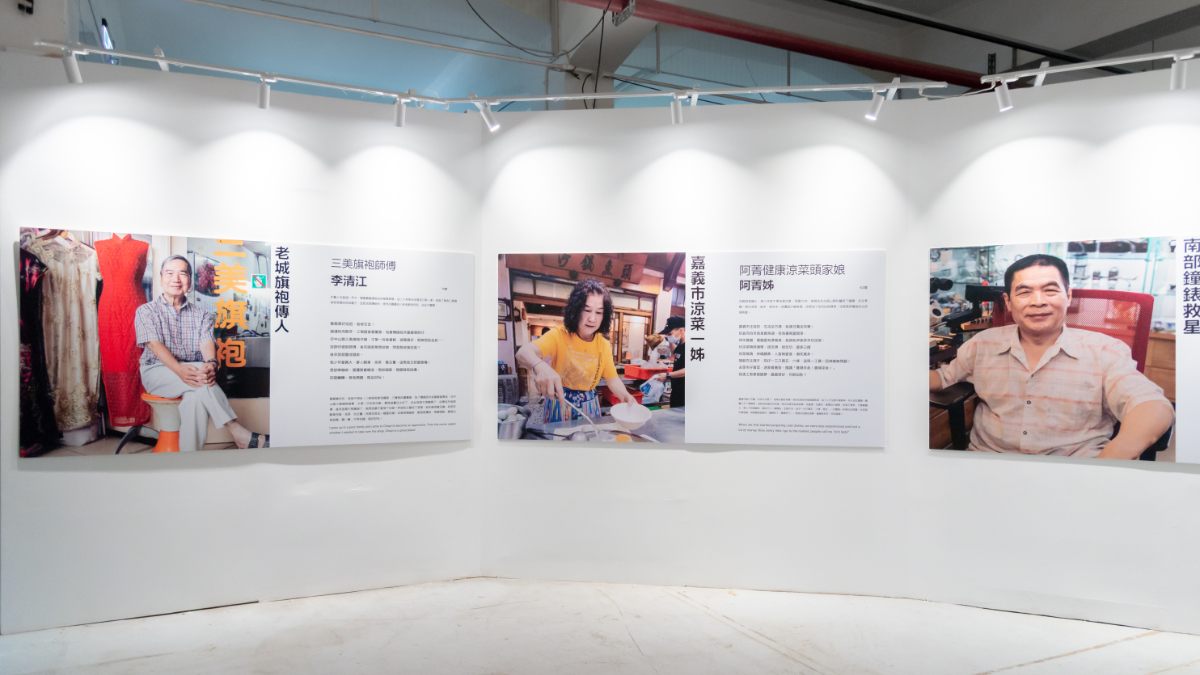
Photo: Napat Charitbutra
And Chiayi is built for one to walk around. With humans’ average five kilometer per hour walking pace; one can really appreciate the surrounding environment of the town at a much deeper level and see that lying underneath different places and architecture on both sides of the streets are superimposed layers of over 300-year-long history. Between 1895 and 1945 when Taiwan was under Japan’s sovereignty, Chiayi, was a land situated at the foot of Alishan Mountain. The town was later born to support the forest industry that was prospering after the end of the Second World War when Japan renounced its sovereignty over Taiwan and handed over the island to ROC, the government or at the time.

Photo: Napat Charitbutra
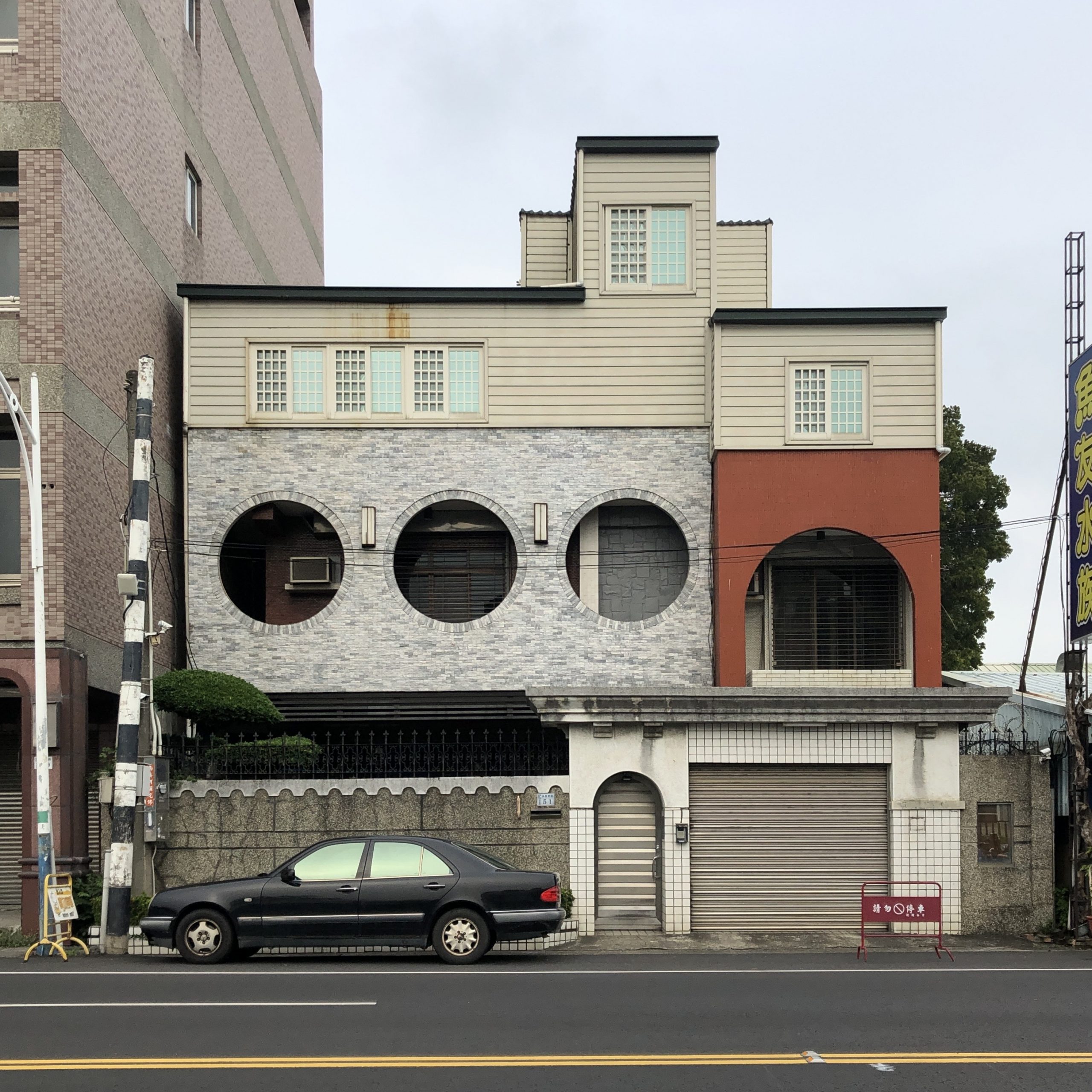
Photo: Napat Charitbutra
The intensive developments that took place within the relatively brief span of fifty years left behind monumental traces from a modern urban plan, Taiwan’s first modern train station building, a railroad track, as well as wooden architecture (the town houses over 6,000 wooden homes and is known as the capital of wooden architecture of Taiwan). Brian Huang said in an article he wrote, which was published in VERSE that if one walks along the branching streets and roadways from the roundabout at the town’s center, they will come across shophouse buildings from various time periods, old markets and independent bookshops hidden inside old buildings. In the past six years, these buildings have regained their spirits when younger generation Taiwanese fled big cities to return to Chiayi, and started to renovate these rundown structures into cafes, pubs, bars and galleries, bringing colors and a charming essence back to the town but with a more contemporary flair. This is where design comes in. It serves as a tool that helps connect the younger generation to take a look back at the town’s historical and cultural values, which is in a way, similar to what curating this expo is all about.
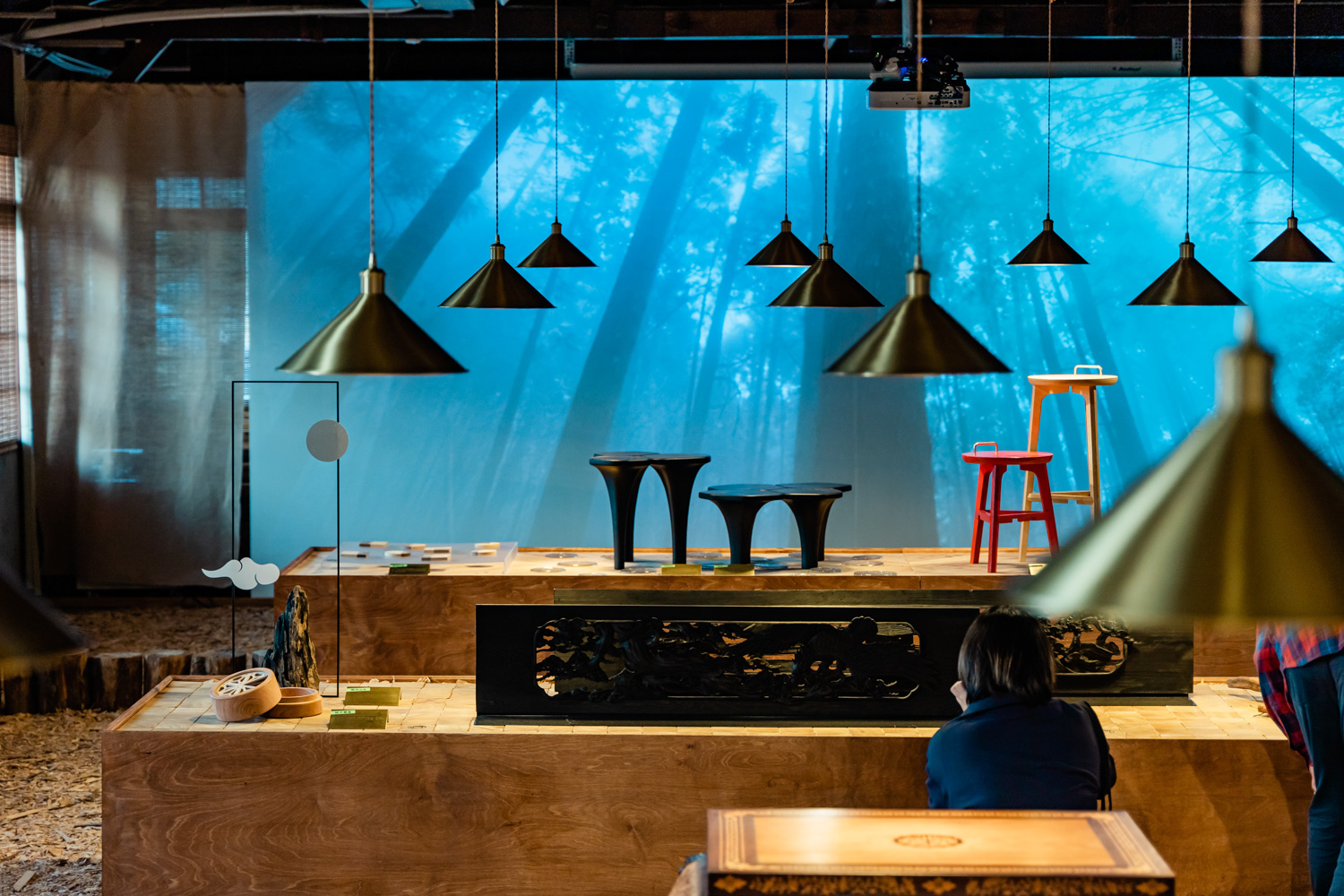
Photo courtesy of Taiwan Design Expo 2021 in Chiayi – City as Home
The next event was the Factory of the Middle exhibition held in the adjacent building. The top floor of this building was occupied by a select shop selling design products from Chaiyi with Ordinary Editorial Room (the town’s online media platform), together with MUGENERATION and Hunter Goods & Co who helped with choosing the items. The ground floor houses a brand new design innovation, the Chaiyi’s navigation and communication system. The display is accompanied by a presentation board asking visitors questions like ‘what do you think is the best font for the town?’, ‘which definition best reflects the Chaiyi’s identity?’, ‘what do you think is a good color?’, all of which received overwhelming and eager feedback and answers.

Photo: Napat Charitbutra
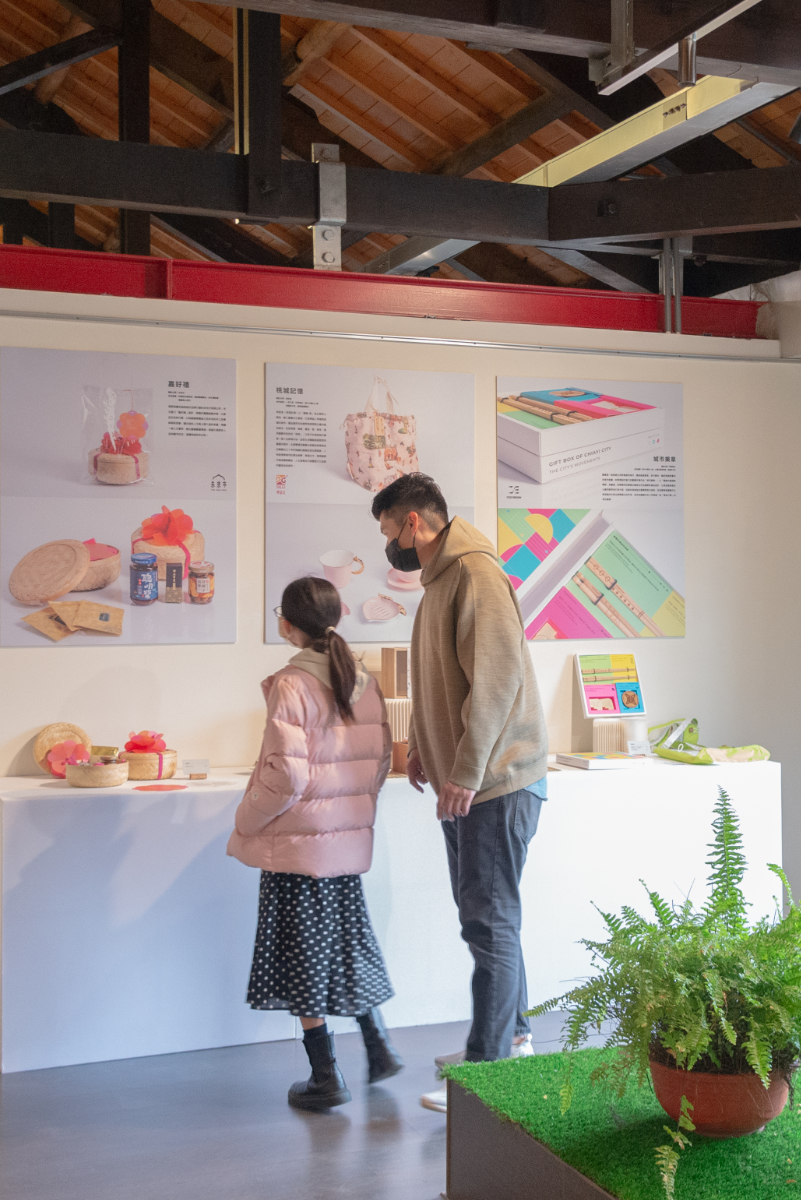
Photo: Napat Charitbutra
Taiwan Design Expo 2021 is also an opportunity for the town to launch its 22 new public buses brought in to replace the old diesel powered buses that weren’t exactly the towners’ favorite. Since Chaiyi is such a small town, people tend to walk or use private vehicles. And while these electric buses are quite small in size, they are designed with great consideration for users who are children and senior individuals.The bus routes run past the school, hospital and important governmental buildings. The buses have accessible low floor and some will be used for tourism purposes. It remains to be seen how popular the buses will be among the Chiayi residents but one thing for sure is the Co2 emission from the town’s public transportation system has now been 100% eliminated.
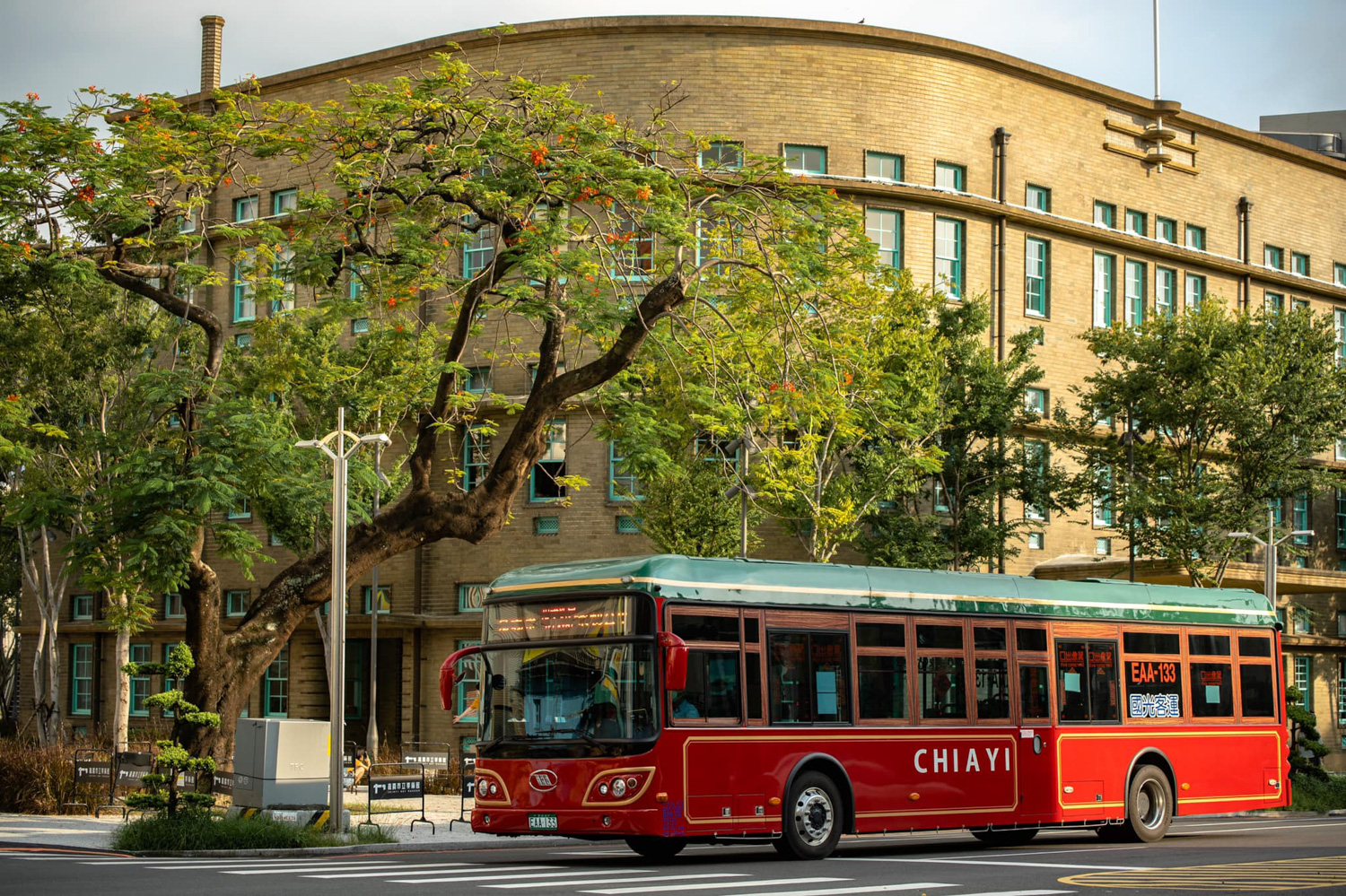
Photo courtesy of Chiayi City Government
Another important venue of the event is Chiayi Sawmill where ALISHAN in Our Memories – Alishan Forest Railway Exhibition is held. The exhibition focuses on the history of the town’s forest industry, from the railway that was constructed along the mountain initially and primarily to transport logs (like how back in the days when Thai people floated the logs down the rivers). The route now serves as a traveling route that aims to provide visitors with information about local botanies and the natural richness of the mountains and forestlands in the area. There is an evident attempt to simulate the forest-like experiences with towering lighting poles whose height reaches the ceiling or the design of the ‘scent’ inside the exhibition space (with essential oil products for sale on the side).
The heyday of the town’s past glorious forest industry was presented through a collection of old photographs and the building where the exhibition takes place. Nevertheless, what’s even more interesting is how these developments brought about by the forest industry have directly impacted the blossoming of Chaiyi’s art and culture. The town is the birthplace of artists such as Chen Cheng-Po (1985 -1947) one of the country’s most prominent painters of the 20th Century. His Street of Chiayi,1927 (or Street of Kagi) oil painting is the first work of art from Taiwan to have ever been exhibited at Imperial Art Exhibition in Japan. The town also hosts an exhibition titled Government Art Exhibition, which has been showcased since 1938, and holds significance as a pivotal force behind artistic movements in Chaiyi, and the foundation of Chiayi Art Museum’s genesis.
Chiayi Art Museum occupies the town’s old tobacco factory building built in 1936. M.H.Wang Architects and Associates and Studiobase Architects, the project’s architects have preserved the building’s original identity while adding elements of contemporary materials to the original structure, introducing new possible ways that the building can be perceived and accommodate future activities that will occur. Throughout the 10-day duration of the exhibition, between December 24th 2021 and January 2nd, 2022, the museum put together Beneath the Surface exhibition, which centered around the search for visible and invisible symbols of the town’s memories.
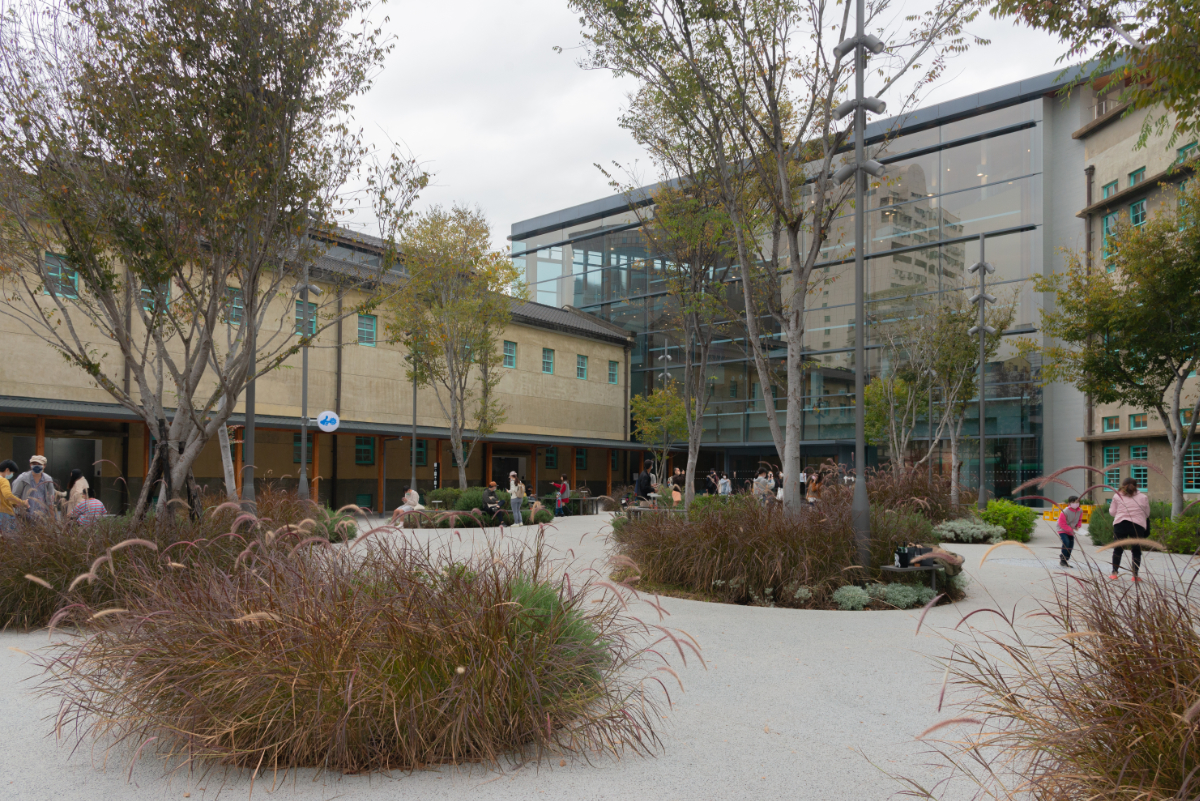
Photo: Napat Charitbutra
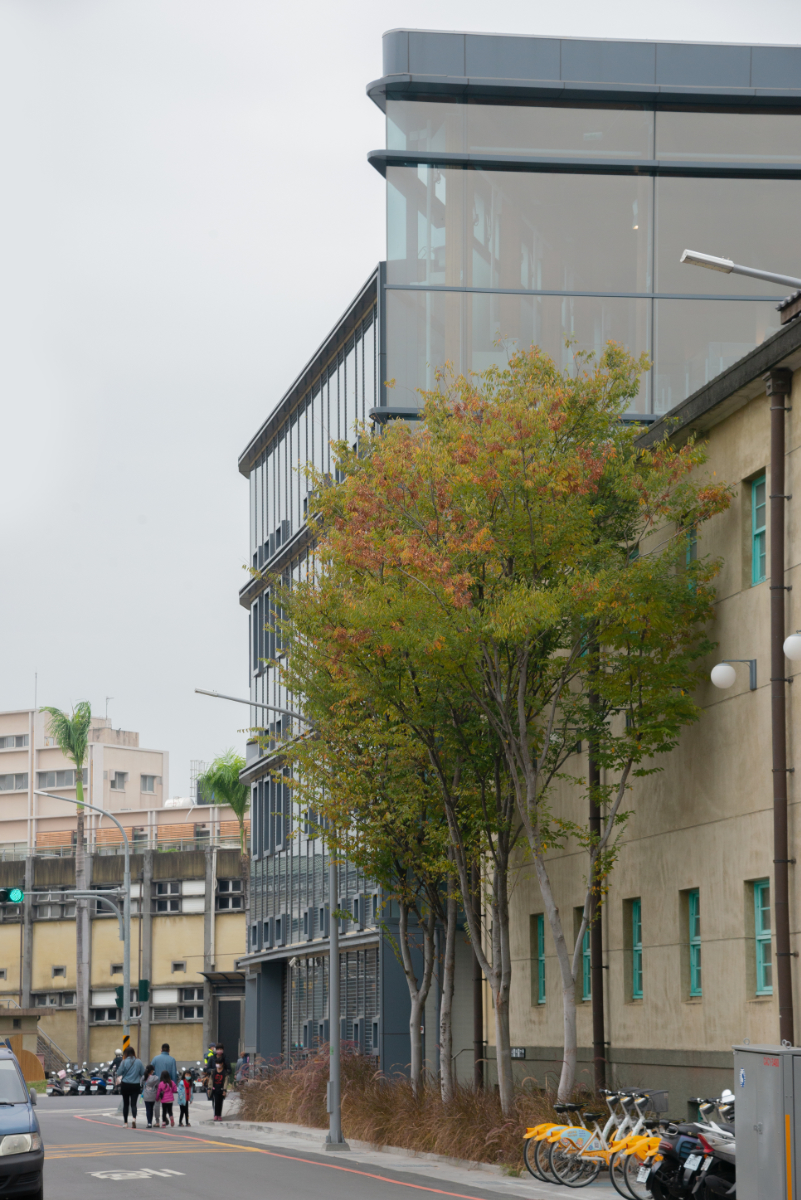
Photo: Napat Charitbutra
There are quite a few other exhibitions that are not mentioned in this article in greater detail, such as ++ Design School, exhibition by a design thinking oriented school that told stories of the relationships between urban design and development or the Jail Hostel exhibition organized inside the town’s old prison. All and all, this Taiwan Design Expo is an interesting branding strategy to promote Chaiyi. And although I’m not exactly sure what Taiwanese people think about the event after having experienced it themselves, what I find to be amazing about this expo is how the ‘ideal’ image of a rural town wasn’t projected in an overly romantic manner or as something along the line of an idyllic, self sufficient agricultural town and way of life, but more of an actual livable place. Similar to many other cities in the world, Taiwan is one of the countries where young people leave their hometowns to seek for job opportunities in big cities such as Taichung, Taipei or Kaohsiung, but with the country’s comprehensive, convenient and quite punctual public transportation systems, the idea of owning a piece of land and a home for their retirement years isn’t exactly impossible for these younger generation citizens.
Fun fact: the name Chaiyi is pronounced the same as the word Jia (家), which also means house in Chinese!

Photo courtesy of Taiwan Design Expo 2021 in Chiayi – City as Home

Photo courtesy of Taiwan Design Expo 2021 in Chiayi – City as Home

